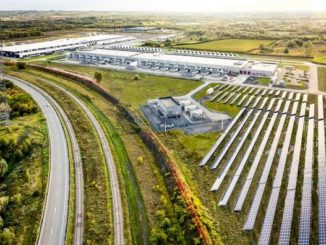
High Performance Computing is traditionally focused on solving the most complex problems in science, engineering, and business. Weather forecasting, for example, takes enormous computing capabilities. As compute advances, so does the accuracy of the forecasts. With the emergence of the COVID-19 pandemic, the need for HPC became even greater and more urgent – to build computing capabilities not just for this current crisis but future ones. HPC will be key in creating a new and better normal.
The term “High Performance Computing” covers a range of machines, from clusters of servers to the largest supercomputers. What they have in common is that they are built for speed and incorporate highly advanced microprocessors. Predominantly, these machines utilize two types of processors in combination: central processing units (CPUs) and graphics processing units (GPUs), with the former excelling at linear calculations in which instructions are performed sequentially and the latter designed to execute instructions in parallel. CPUs and GPUs are tied together with high-speed interfaces and the fastest available memory, with everything powered by semiconductor technology.
These can be complemented by purpose-built processors including Application Specific Integrated Circuits (ASICs) and Field Programmable Gate Arrays (FPGAs), depending on the workload. ASICs are beneficial when the algorithms being executed are stable, meaning they do not change over time. FPGAs by contrast, can be quickly reprogrammed to meet emergent needs without sacrificing performance and energy efficiency. These processors can accelerate the work done by CPUs and GPUs and are expected to increasingly be part of a heterogeneous processor mix for HPC and other uses.
Need For Computing Capability And Speed Is Greater Than Ever
It is fair to say that semiconductors and HPC systems are among the most important technologies today and are a major focus for us at AMD. The supercomputers expected to be some the fastest in the world will begin operation this year and next, breaking the exascale performance barrier for the first time.
The speed of an HPC system is typically measured by the number of arithmetic operations per second it can perform (floating point operations per second, often referred to in the industry as flops). Exascale refers to a machine capable of at least one exaflop or a billion billion calculations every second. That is a quintillion for those who are keeping score. Every second. Put another way, the El Capitan supercomputer is expected to be the fastest in the world when it comes online in 2023. It is so fast that it would take eight years if all 7.7 billion people on Earth each completed one calculation per second to do what El Capitan can do by itself in one second! The scale is almost unimaginable.
With exascale computing, HPC will soon become faster than the fastest machines currently in use, and critically important as we collectively face major challenges in our current world. Not every problem will need an exascale machine, but some of the most pressing will, especially in fields including energy, medicine, scientific research and development of new materials.
HPC Is Key To Scientific Breakthroughs
A great example is nuclear fusion that could safely offer virtually unlimited power with little or no pollution. Scientists have been working on this for decades but have so far lacked the power to unlock how to make this vision viable. In combination with Artificial Intelligence, new HPC supercomputers should substantially decrease the time to discovery through faster pattern recognition in data and for running critical simulations.
HPC also excels at simulations of climate change, layering-in more data with greater ability to adjust the modeling. The technology can also aid research in cybersecurity, molecular biology, and precision medicine. For the latter, HPC can help to identify treatments tailored for specific individuals. This is a grand challenge – what tech inventor and visionary Ray Kurzweil describes as a paradigm shift in health technology – that requires tremendous computing ability. Precision medicine will address the prevention, treatment, and health outcomes of human diseases through a more precise analysis of genetic, developmental, behavioral, and environmental factors.
We Can Create A Better Normal
HPC is currently used for COVID-19 vaccine development and treatment research to determine how to mitigate the virus. And it is used for a multitude of other applications, from modeling the spread of the virus to determining the best methodologies for contact tracing. This work is mostly being done by research institutions and leading universities.
This is the kind of cutting-edge research that excites us. Last year, amid the COVID-19 pandemic, we partnered with Penguin Computing to donate several HPC machines to New York University (NYU), Massachusetts Institute of Technology (MIT) and Rice University, as well as other colleges and universities for critical COVID-19 research to combat the global pandemic. The machines have also been used for genomics, vaccine development, transmission science and modeling and other COVID-19 related research.
Our work with governments and universities for HPC systems demonstrates the power of collaboration between private industry and academic institutions to put groundbreaking innovations into the hands of scientists and researchers. A year later, these smart investments in technology are creating a ‘better normal’, a stronger recovery and support new ways of working, learning, and living inspired by the human ingenuity shown in response to the Coronavirus pandemic.
While the COVID-19 pandemic is not fully behind us, we are beginning to see progress. With the advent of exascale computing, we are on the doorstep of more exciting breakthroughs that could address some of the pressing challenges facing humanity. Within the next couple of years, a single new machine should provide more computing computer capability than the ten fastest machines combined today. This new era in technology has and will continue to define the next normal and is likely to have a profound impact on nearly every aspect of our daily lives.
Mark Papermaster is chief technology officer and executive vice president of technology and engineering at AMD.





Be the first to comment